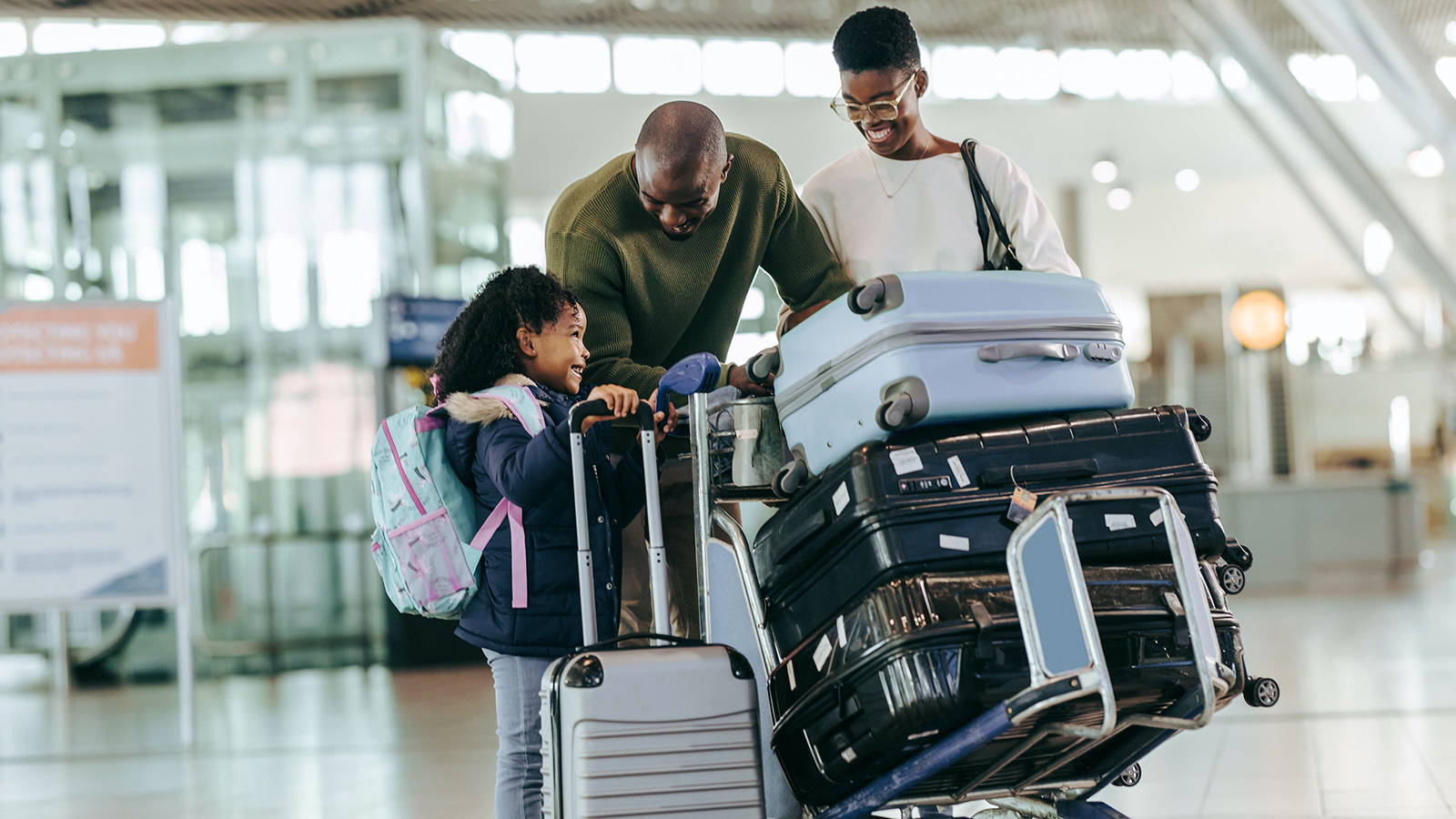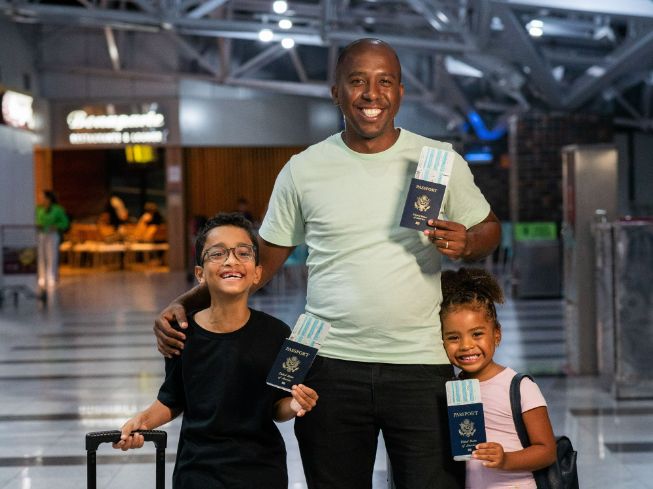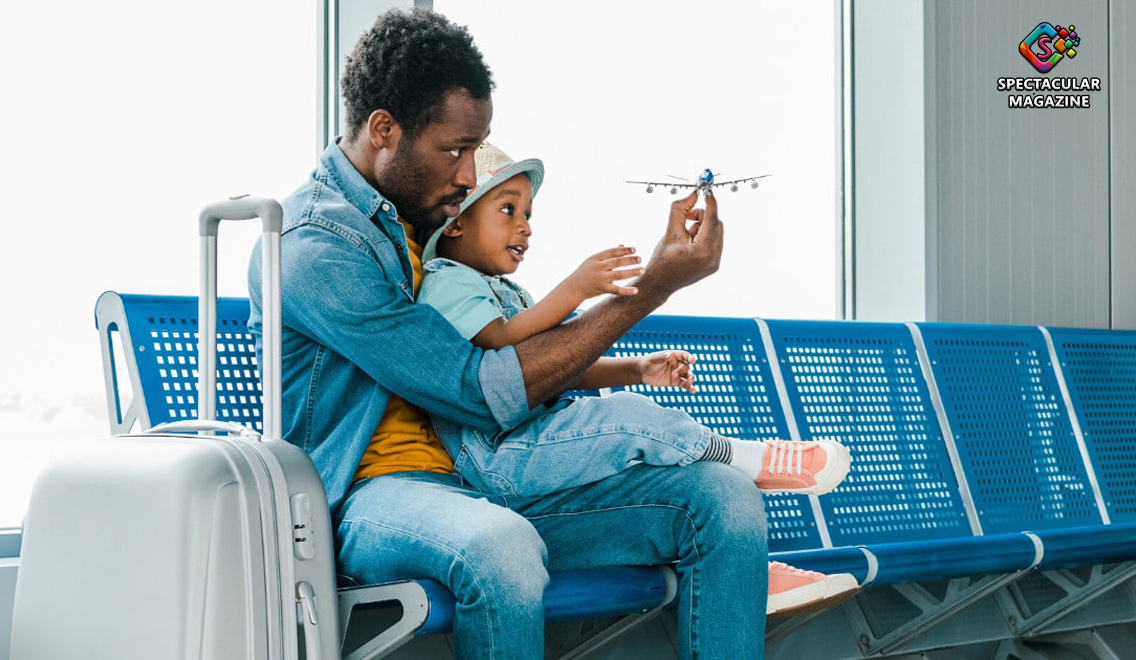How To Travel With Kids When You Don’t Share A Last Name
Between the extra luggage, the disrupted schedules, and the hours spent waiting at the airport, traveling with kids can be a challenge. But there’s one issue some parents don’t see coming: getting through security when you don’t share a last name with your own kids or preparing to have a child travel with another adult who is not their parent.
It’s an increasingly common scenario. Maybe you gave the kids your partner’s last name but kept your own or gave them a new name that’s a hybrid of both. Maybe you’re a stepparent or other legal guardian or even a teacher traveling with kids who aren’t related to you. It’s perfectly legal, but if you don’t plan ahead and come prepared, you could run into snags with security and customs.
Below, Rocket Lawyer shares their best advice for successfully navigating the hurdles at the airport so you and your child can have a smooth, enjoyable trip.
Domestic Travel
 Children traveling domestically have less stringent ID and consent requirements than those traveling internationally, but it’s still a good idea to come prepared with documents in case you run into an issue. The two most important documents are the child’s ID and a consent form from their legal guardian.
Children traveling domestically have less stringent ID and consent requirements than those traveling internationally, but it’s still a good idea to come prepared with documents in case you run into an issue. The two most important documents are the child’s ID and a consent form from their legal guardian.
- ID: The TSA does not require minors under the age of 18 to show ID when traveling with an adult companion within the United States, but some airlines do. So before you get to the airport, be sure to check with your airline about ID requirements for minors—especially if your child will be traveling alone. A copy of your child’s birth certificate does triple duty as proof of age, ID, and as proof that you are the child’s parent, especially if you don’t share a last name. If your child is old enough to have one, a DMV ID, like a driver’s license, is accepted almost everywhere, too.
- Consent Forms: If you’re traveling alone with your own child on a domestic flight, you don’t need a parental consent form from your child’s other parent to fly. But if you don’t share a last name with your child, it’s a good idea to have a copy of the child’s birth certificate on hand to prove your relationship. If you’re traveling with someone else’s child and the parents are not with you, be prepared to show documentation that you have permission to travel together. There’s no official consent form, so you’ll need to make one yourself. We recommend a signed and notarized consent letter from the child’s parent or parents, such as the Child Travel Consent Form. Be sure to include the child’s name, the companion’s name, the dates of travel, the destination, the parents’ names and contact information, and a statement of permission from the parents. You may never be asked for a consent letter on a domestic flight, but it’s good to have it just in case.
International Travel
 Children traveling internationally are subject to more ID and consent requirements than domestic travelers. These rules are in place to prevent parental kidnapping and other forms of child abduction, so while gathering the necessary documents may be a hassle, remember that they serve an important purpose.
Children traveling internationally are subject to more ID and consent requirements than domestic travelers. These rules are in place to prevent parental kidnapping and other forms of child abduction, so while gathering the necessary documents may be a hassle, remember that they serve an important purpose.
- Passports: Passports are required for minors traveling internationally, no matter how young and regardless of whether they’re traveling alone, with a parent, or with another adult companion. Children must apply for a passport in person, and their parent or legal guardian must sign the required forms in front of a passport agent. If the child has more than one parent or legal guardian, the second parent or guardian must either be present or submit a notarized Statement of Consent: Form DS-3053.
- Consent Forms: Unlike domestic flights, you can’t take your child on an international flight without the presence or permission of their other parent or legal guardian. In fact, even if you’re flying together, it’s a good idea for you each to carry signed and notarized consent forms in case you get separated. Again, there’s no official consent form, but you can use any signed and notarized consent letter, such as our Child Travel Consent Form.
If you don’t share a last name with your child, bring a notarized copy of the child’s birth certificate so you can prove that you are the child’s parent. If adoption certificates or documents of legal guardianship apply to your situation, bring notarized copies of those, too. If your name on the child’s birth certificate, adoption certificate, or guardianship documents does not match the current name on your passport, bring a notarized copy of the proof of name change (such as a court order or marriage license).
If you are traveling with a child who is not yours, bring signed and notarized consent forms from the child’s parents or legal guardians. Consent form requirements vary by destination, so you may not be asked to produce them, but it’s always better to be safe than sorry.
Traveling with your kids can be a wonderful way to see the world, have new experiences, and learn about different places and cultures. As long as you plan ahead and have your paperwork in order, you should be prepared for any questions at security or customs and well on your way to enjoying your adventure.


